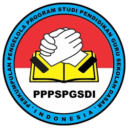Pengembangan Bahan Ajar Keterampilan Menulis Bahasa Inggris Berbasis Creative, Active, Systematic, dan Effective (CASE) Bagi Siswa Sekolah Dasar di Kota Tangerang
DOI:
https://doi.org/10.35568/naturalistic.v8i1.3180Keywords:
Bahan Ajar, CASE, Keterampilan MenulisAbstract
The research aim is to develop teaching materials for English writing skills based on Creative, Active, Systematic, and Effective (CASE) for Elementary School Students in Tangerang City. Creative, Active, Systematic, and Effective (CASE) based teaching materials are learning resources that can direct students to learn creatively, actively, systematically, and effectively so they can gain maximum knowledge and understanding of the material. The research method used in this study uses Research and Development (R&D) using the Dick & Carey approach. The subjects of this study were fourth grade students from SDN Cikokol 4 Tangerang. The instrument in this study was a product assessment questionnaire given to students, teachers, and media expert, material expert as well as English language experts. The result indicated that the product of material development gained average of 82,4% or in category of very sufficient, and the pretest posttest result was t-count 2,319 > t-table 2,048. In other words, it can be concluded that there was a significant different score between pretest and posttest in terms of writing skills. Thus, it can be stated that the product of materials development can be used in the teaching learning English and can develop students writing skills effectively.
Downloads
References
Abidin, Z., & Walida, S. El. (N.D.). Pengembangan E-Modul Interaktif Berbasis CASE (Creative, Active, Systematic, Effective) Sebagai Alternatif Media Pembelajaran Geometri Transformasi untuk Mendukung Kemandirian Belajar dan Kompetensi Mahasiswa. Seminar Nasional Matematika Dan Aplikasinya, 21 Oktober 2017 Surabaya. In Universitas Airlangga (Vol. 197).
Ardelia, E., Magdalena, I., & Rosnaningsih, A. (2022). Pengembangan E-Modul Interaktif Berbasis CASE (Creative, Active, Systematic, Effective) pada Mata Pelajaran Bahasa Inggris Kelas IV Di Sekolah Dasar Negeri Karawaci Baru 4 Kota Tangerang. Jurnal Pendidikan Tambusai, 6(2), 9999-10008.
Harmer. (2004). How to Teach English. Essex. Pearsom Education, Ltd
Ida Malati Sadjati, Drh, & Ed, M. (2012). Hakikat Bahan Ajar. Tangerang Selatan: universitas Terbuka
Kementerian Pendidikan Republik Indonesia. (N.D.). Permendiknas RI No. 22 Tahun 2006 Tentang Standar Isi Untuk Satuan Pendidikan Dasar Dan Menengah.
Magdalena, I., Prabandani, R. O., Rini, E. S., Fitriani, M. A., & Putri, A. A. (2020). Analisis Pengembangan Bahan Ajar. In Jurnal Pendidikan Dan Ilmu Sosial (Vol. 2, Issue 2). Https://Ejournal.Stitpn.Ac.Id/Index.Php/Nusantara
Mahrani, E., & Siregar, Rabiatul Adawiyah. (2019). Keterampilan Menulis. Tangerang Selatan:
Melindawati, S. (2016). Pengembangan Bahan Ajar Tematik Terpadu Dengan Model Problem Based Learning Di Kelas Iv Sekolah Dasar.
Ratminingsih. (2017). Metode dan Strategi Pembelajaran Bahasa Inggris. Depok: Raja Grafindo
Sugiyono. (2011). Metode Penelitian Kuantitatif, Kualitatif, dan R&D. Bandung: Alfabeta.
Suyanto, K. K. E. Hakikat Pembelajaran Bahasa Inggris Untuk Anak
Zuriah, N., Sunaryo, H., & Yusuf, N. (2016). Guru Dalam Pengembangan Bahan Ajar Kreatif Inovatif Berbasis Potensi Lokal. in Ibm Guru Dalam Pengembangan Bahan Ajar Kreatif Inovatif Berbasis Potensi Lokal (Vol. 13).
Downloads
Published
How to Cite
Issue
Section
License
Copyright (c) 2023 Naturalistic: Jurnal Kajian dan Penelitian Pendidikan dan Pembelajaran

This work is licensed under a Creative Commons Attribution-NonCommercial-NoDerivatives 4.0 International License.
Copyright of Journal Naturalistic : Jurnal Kajian Penelitian Pendidikan dan Pembelajaran (e-ISSN:2548-8589, p-ISSN:2528-2921).
Open Access Policy
This journal provides immediate open access to its content on the principle that making research freely available to the public supports a greater global exchange of knowledge.
This journal is open access journal which means that all content is freely available without charge to users or / institution. Users are allowed to read, download, copy, distribute, print, search, or link to full text articles in this journal without asking prior permission from the publisher or author. This is in accordance with Budapest Open Access Initiative.






